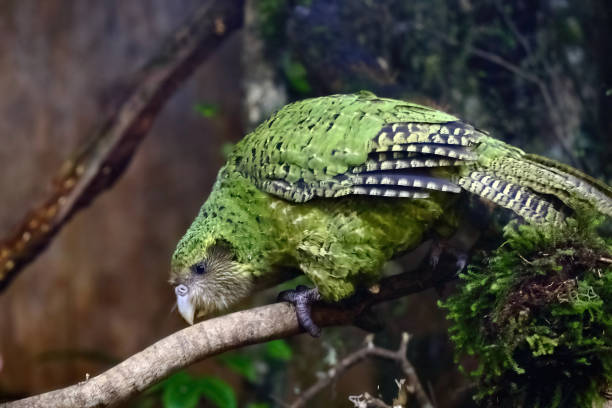Endearing Eccentricities: The Unsung Charm of the Kakapo
The world of pets and animals is full of charming idiosyncrasies that often go unnoticed. One such eccentricity exists in a flightless bird from New Zealand, the Kakapo. This rotund parrot, with its owl-like face and waddling gait, is a creature of fascinating peculiarity and unmatched charm. Known for its unusual traits and behaviours, the Kakapo offers a refreshing perspective on the diversity of life in the animal kingdom.

A Dive into the Past: The Kakapo’s Historical Context
The Kakapo, which means ‘night parrot’ in Maori, is endemic to New Zealand. Historically, the bird thrived across the country, flourishing in the dense forests. However, the arrival of humans and mammalian predators such as rats, stoats, and cats led to a drastic decline in their numbers. Today, the Kakapo is critically endangered, with a population of just over 200 individuals.
Present Predicaments and Conservation Efforts
Despite the doom and gloom, the Kakapo’s story isn’t all bleak. Thanks to intensive conservation efforts, the bird’s population has been steadily increasing. In recent news, the Kakapo Recovery Program reported the successful breeding of 34 chicks in 2021, a significant achievement considering the bird’s slow reproductive rate. The program’s use of cutting-edge technology, such as GPS tracking and genomic sequencing, has been instrumental in this success.
The Kakapo in Pet Trade: An Improbable Scenario
Given the Kakapo’s endearing nature, one might wonder about its potential as a pet. However, due to its critically endangered status and the stringent laws protecting it, the bird is not available in the pet trade. Its estimated market value is, therefore, nonexistent. The focus remains on conserving the wild population, rather than domesticating this remarkable bird.
The Kakapo’s Unique Attributes: A Research Perspective
Research into the Kakapo’s behaviour and biology has revealed many fascinating facts about this bird. For instance, it’s the world’s heaviest parrot, it’s nocturnal, and it’s the only parrot that cannot fly. Kakapos have a unique lek breeding system, wherein males compete for females’ attention with loud, low-frequency calls. Furthermore, they’re known for their longevity, often living up to 90 years.
The Kakapo: An Emblem of Hope
The Kakapo’s story is a testament to the resilience of nature and the power of dedicated conservation efforts. Despite facing near extinction, this enchanting bird continues to cling on, captivating biologists and animal lovers alike with its peculiarities. The Kakapo serves as a reminder of the rich diversity that exists in the animal kingdom and the imperative to protect it.
In conclusion, the Kakapo’s unique characteristics and conservation story offer a fresh perspective on wildlife. While it may not be a common pet or a widely known species, the Kakapo’s eccentric charm and resilience make it a fascinating subject within the realm of pets and animals. Through understanding and appreciating such obscure species, we can broaden our perspective of the natural world and strengthen our commitment to its preservation.





